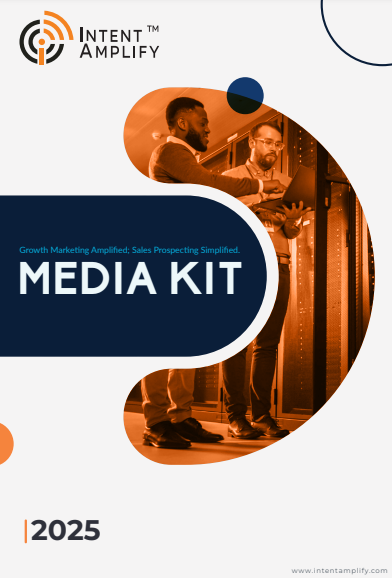
Creating Your Ideal Customer Profile in 2025: A Step-by-Step Guide
- Last updated on: July 10, 2025
An ideal customer profile from a B2B perspective is at the core of the strategic foundation.
Today’s buyers are educated and smart. The buying processes are more complicated, and customization is no longer a choice; it’s required. For US-based B2B marketers, success rides on having the right accounts, not just the sheer volume of accounts.
Building a high-performing Ideal Customer Profile guarantees that marketing, sales, product development, and customer success teams all align to the same definition of “best-fit” customers.
This guide will take you through building an ICP in 2025, specific to today’s data-enabled, intent-driven, and value-based B2B market. You’ll receive step-by-step guidance, real-world examples, and a downloadable template to create your own.
What Is an Ideal Customer Profile (ICP)?
An Ideal Customer Profile (ICP) is a thorough account of the best-fit company for your product or service. It is more than general demographics or firmographics. A good ICP comprises firm size, industry, revenue, budget potential, buying behavior, tech stack, challenges, and even intent signals.
Creating a data-backed ICP helps B2B marketers:
- Customer lifetime value (CLV) should be a priority.
- Creating campaigns to for the high-potential accounts
- Alignment of sales and marketing strategies and teams
- Planning to improve conversion rates
- Focus on reducing customer churn
Dealfront reports that over 78% of B2B businesses identify better lead quality through an ICP, using it to accelerate client acquisition, improve conversion velocity, and align GTM teams.
Why the ICP Matters in 2025
The urgency to provide quantifiable ROI has never been greater. Marketing groups must drive high-quality leads alongside optimized spend. Inbound alone doesn’t cut it anymore. With the appropriate ICP, each dollar you spend is directed toward bringing in accounts that actually close.
Top Reasons to Prioritize Your ICP in 2025:
- ABM is standard: 87% of B2B marketers in North America use Account-Based Marketing in some form. An ICP is critical for targeting and segmentation. (source)
- Intent data is mainstream: Modern marketers use third-party intent data to identify in-market buyers. Your ICP determines who gets prioritized.
- AI in marketing requires precision: Tools like 6sense, Demandbase, and HubSpot AI rely on accurate ICP inputs to deliver useful outputs.
- Budget efficiency: Focusing on best-fit accounts means less wasted spend on unqualified leads.
ICP vs. Buyer Persona: Know the Difference
Most teams get Ideal Customer Profile (ICPs) and buyer persona confused, but they have different applications.
Your ICP indicates the kind of company you desire to target, and buyer personas target the people who work within those companies. Begin with your ICP to inform account selection, then create personas in order to customize your messaging for a particular role and decision-maker.
ICPs and buyer personas complement each other best when used in tandem. ICPs allow you to target high-fit firms based on firmographics and behavior. Personas drill down deeper, allowing you to write content and messaging for targeted roles within those accounts.
Aligning both provides your marketing with sharper targeting and increases engagement, lead quality, and conversion rates throughout your sales pipeline.
Step-by-Step Guide to Creating Your ICP in 2025
Step 1: Examine Your Current Customer Base
Begin by examining the data available in your CRM and customer success platforms. Identify your most successful and profitable accounts by evaluating metrics. Focus on Customer Lifetime Value (CLV), Net Promoter Score (NPS), retention, and renewal rates.
Use up-selling techniques or cross-selling performance. Look for recurring patterns in customer success that indicate the type of company most aligned with your solution. These insights will serve as the foundation for defining your initial ICP.
Step 2: Gather Firmographic and Technographic Information
Then, acquire in-depth firmographic and technographic information regarding your best-performing accounts. Major firmographic characteristics are industry, size of company (as measured by employees or revenue), geographics, and growth stage (startup, scale-up, enterprise).
Technographic information is about the tools and technologies employed by the company, including their CRM platform, cloud provider (AWS, Azure, GCP), or security and compliance frameworks (SOC 2, ISO 27001). Tools such as ZoomInfo, Clearbit, BuiltWith, and HG Insights may be used to enrich your account profiles with up-to-date information.
Step 3: Layer in Intent and Engagement Signals
Modern B2B marketers are utilizing intent and behavioral indicators more to refine and improve upon static profiles of ICPs. By looking at engagement metrics, including which industries are regularly visiting your site, downloading gated content, or showing up for your webinars, you can see who is actually considering solutions like yours.
Platforms like Intent Amplify and other buyer intelligence tools offer real-time insights into which accounts are actively researching relevant topics and solutions. These intent signals help B2B marketers prioritize high-fit accounts, tailor outreach, and align campaigns with actual buyer interest, making your ICP strategy more data-driven and responsive.
This added depth of insight ensures your ICP is adaptive and timely within an ever-evolving B2B market.
Step 4: Interview the Sales and Customer Success Teams
While quantitative information is valuable, qualitative feedback from your frontline teams is equally important. Your customer success and sales teams talk with customers and prospects every day. These interactions often expose patterns that can’t be uncovered through data alone.
Do structured interviews to learn what kind of companies close the quickest, where deals will commonly stall or fail, and what pain points or objections prospects most commonly cite. Search for recurring patterns like budget concerns, stakeholder misalignment, or product fit issues that can confirm or disprove your hypothesis. These patterns give richness to your ICP and assist you in comprehending not only who your best-fit customers are, but why they purchase and how they act along the way.
Step 5: Determine Common Goals and Challenges
A good ICP not only describes who the customer is, but also what they are attempting to accomplish. Determine common business issues within your target accounts, including operational inefficiencies, compliance risk, growth limitations, or revenue leakage.
Knowing the objectives and pain areas of your target customer informs both targeting and messaging. For instance, mid-sized eCommerce businesses might experience problems related to cart abandonment, marketing attribution, or supply chain complexity.
Step 6: Document Your ICP Clearly and Concisely
After gathering all your qualitative and quantitative insights, the next critical step is to document your Ideal Customer Profile in a structured and standardized format.
This documentation should go beyond high-level summaries and include detailed firmographic attributes (such as industry, company size, and revenue range), technographic requirements (such as cloud platforms, CRM usage, or security tools), and behavioral characteristics (like content consumption patterns or product usage behaviors).
It should also include the central roles that are party to the buying process, particularly those in the decision-making unit (DMU) along with typical business pain points and the precise value that your solution addresses to fix them.
Form is important: employ visually consumable formats like annotated tables, grid infographic style, or one-page ICP briefs in order to enable the data to be easily referenced throughout departments. If done correctly, a well-documented ICP puts cross-functional teams marketing and sales, product, and customer success on the same page about who the ideal customer is and how to get their attention.
Step 7: Make Your ICP a Target Account List (TAL)
After having your Ideal Customer Profile well-defined and documented, the next move is to take that profile and turn it into an executable Target Account List (TAL). This entails narrowing down your larger market universe to isolate accounts based on your ICP criteria, beginning with firmographic and technographic fit.
But don’t just stop there. To create pipeline efficiency, overlay real-time indicators such as buyer intent, history of engagement, and funnel stage activity.
This process enables you to rank accounts not just on fit but also on buy-readiness, making your go-to-market plan more accurate and effective. Scoring models can be developed to prioritize accounts using weighted attributes including role coverage, historical activity, and product suitability.
Tools such as Intent Amplify, RollWorks, Terminus, and Demandbase offer capabilities to automate the creation of a TAL, refresh the lists automatically, and expose priority accounts as conditions change. When ICPs and TALs are well-integrated, your ABM initiatives get more focused, quantifiable, and ultimately more impactful.
Common Mistakes to be Careful Of
Even experienced B2B teams are susceptible to pitfalls when creating or applying their Ideal Customer Profile (ICP). Misframing your ICP or approaching it as a one-and-done process can result in wasteful budget, poor-fit leads, and subpar campaigns.
Below are five common pitfalls to steer clear of:
-
Blurring ICP with persona
An ICP is the kind of company that best suits your solution, and a buyer persona is the individual decision-makers in that company. Blending both creates a situation of reaching the right person in the wrong company or the wrong person in the right company, resulting in reduced conversion rates.
-
Relying on assumptions
It’s simple to make an assumption about the “best fit” companies based on experience or previous success. But the gut is not reliable. Use CRM data, win/loss, technographics, and intent signals to confirm your ICP criteria and ensure they point to actual buying behavior.
-
Not iterating
Markets change, competitors mature, and your product evolves. An ICP two years ago might not be so relevant for today’s objectives. Go back and update your ICP from time to time, ideally following major go-to-market shifts, product releases, or changes in customer feedback.
-
Not empowering the team
An ICP stuck in a slide deck doesn’t benefit anyone. Ensure that your sales, marketing, and customer success teams know your ICP, how it was created, and how to apply it to their day-to-day workflows. Alignment enhances consistency and execution down the funnel.
-
Over-segmentation
Crafting too many niche ICPs can be a seemingly smart move, but it tends to weaken focus and stretch resources too thin. Rather, prioritize a handful of high-value segments and craft campaigns with depth instead of scattering efforts across dozens of micro-audiences.
In short:
A robust ICP is a collaborative, data-driven foundation that matures over time. Steering clear of these traps ensures your go-to-market motion remains aligned, effective, and laser-focused on the right opportunities.
Operationalizing Your ICP: Turning Strategy into Execution
Defining your Ideal Customer Profile is only the first step. To drive business results, you must bring the ICP into your daily go-to-market execution. This involves transitioning from theory to practice.
Begin by aligning your ICP with your CRM, MAP, and sales intelligence platforms. Tag or score all accounts and leads by ICP fit. Leverage ICP criteria for content strategy, campaign segmentation, SDR outreach, and product marketing storytelling.
Sales teams can leverage the ICP as a qualification filter, whereas marketing can craft tailored messaging and offers based on it. ICPs can also inform pricing plans, partner alignment, and onboarding sequences.
Don’t neglect customer success. Your ICP enables CS teams to anticipate churn, grow accounts, and realize value sooner by matching solutions to recognized customer goals and pain points.
According to WebFX (2025), organizations with a strong ICP achieve 68% higher account win rates compared to those without one.
Lastly, check performance quarterly. Are ICP-fit accounts closing quicker? Are they growing larger? Looping real-time results back into your ICP definition ensures ongoing improvement.
In short, operationalizing your ICP makes it no longer a marketing report but a growth machine.
Final Thoughts: A Modern ICP Is a Strategic Must-Have
Creating an ICP in 2025 isn’t just a marketing task; it’s a company-wide growth lever. As the B2B buying journey becomes more complex, and as AI and automation dominate go-to-market motions, your Ideal Customer Profile will guide who you target, how you engage, and what you say.
By investing time in building a thoughtful, data-backed, and dynamic ICP, your team will:
- Align sales and marketing.
- Boost revenue efficiency.
- Improve conversion rates.
- Scale outreach with precision.
In short, your ICP is not a document. It’s your competitive advantage.
FAQs
1. How can I tell if my ICP is effective?
Monitor performance indicators such as win rate, deal velocity, customer lifetime value (CLV), and marketing-to-sales conversion rates for ICP-fit accounts. If these metrics improve over time, your ICP is in sync with reality.
2. How does an ICP impact Account-Based Marketing (ABM)?
ICP is the basis for ABM. It determines which accounts land on your Target Account List (TAL), influences messaging strategy, and ensures that resources are being directed to the highest-fit opportunities.
3. How is AI transforming how we define and apply ICPs?
AI solutions process high levels of buyer signals to detect patterns that could go unnoticed by human teams. They dynamically score, segment, and rank accounts based on current behavior, improving the validity of your ICP.
4. Why is having an ICP so important in 2025?
With growing pressure for ROI and precision at the account level, an ICP makes your marketing and sales efforts concentrate on more likely-to-convert, keep, and expand accounts. It aligns your go-to-market strategies with fit and readiness in the real world..
5. How often should I refresh my ICP?
Update and finalize your ICP a minimum of every six months or more often in case of major product changes, changes in buyer behavior, or changes in the market. A living ICP ensures that your targeting remains accurate and valid.




